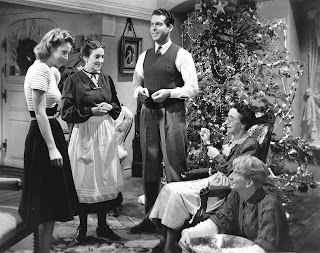PROFESSOR MORIARTY’S NOTORIOUSLY NETTLESOME AND NEFARIOUS NEW YEAR’S DAY 2017 MOVIE QUIZ
We at SLIFR University are fully aware that most of you are
probably settling in for the last few days of a hopefully restful and renewing
holiday season, or at least the meaty part of a long three-day weekend meant to
celebrate the passing of a spent and stressful old year and the hope (fingers
and hearts and minds crossed) of a better one over the 365 days to come. But we
also believe in the value of unexpected education, particularly as it pertains
to the concept of the pop quiz. And what quiz could pop more unexpectedly than
one dropped on the student whose thoughts are conveniently focused on seasonal
celebrations at the expense of her or his studies? Can we get a sinister
chuckle?
Certainly our esteemed professor of the moment is eminently qualified to bring forth such a noise. It is our honor and privilege to present to you now this latest quiz as administered by its author, SLIFR University’s very own Dean of Philosophical Ethics, Professor James Moriarty. The professor, who reminds his students that of all subjects his own shadowy past is the one that may not be broached during classroom hours (he believes that to be a topic for discussion best suited for private sessions in the his eerie clock tower office perched high above the SLIFR campus), has said that he desires to take us forth into the coming year with our minds set on the lessons of the past year that we can gather from our experiences and apply to the various ethical situations with which we may soon find ourselves faced. But, being the pesky mastermind that he is (evil or merely amoral—you must decide), it may be that he’s just toying with the minds of his students, tossing out matters of trivia meant to distract from those very ethical concerns, all the better to set the traps, academic and otherwise, he has hidden between the lines of his seemingly innocuous syllabus.
The only way to find out for sure is to proceed with the
quiz and take your chances. Here’s how the professor demands it be done. Answer
each thoroughly, to the best of your abilities, at any length you choose, but
remembering that the more verbose the response, the more credit you will
receive in the professor’s ledger. And when you answer, be sure to cut and paste the question along with your answer into the
comments section so your answer may be more easily understood. Due to
current space restrictions on Blogger, you may find it necessarily to post your
answers in two or three sections. Or, if you have your own site, feel free to
post a link to that location so we can read your answers there.
So, without further delay, let us get under way. The
professor waits for no one, especially bleary-eyed students who wish they were
anywhere else but at their desks, awaiting further instructions. Number twos
up. You may now open your blue books… and begin.
****************************
1) Best movie of 2016
2) Worst movie of 2016
3) Best actress of 2016
4) Best actor of 2016
5) What movie from 2016
would you prefer not hearing another word about? Why?
6) Second-favorite
Olivier Assayas movie
7) Miriam Hopkins or Kay
Francis?
8) What’s the story of your
first R-rated movie?
9) What movie from any
era that you haven’t yet seen would you be willing to resolve to see before
this day next year?
10) Second-favorite Pedro
Almodovar movie
11) What movie do you
think comes closest to summing up or otherwise addressing the qualities of
2016?
12) Chris Pine or Chris
Pratt?
13) Your favorite movie
theater, presently or from the past
14) Favorite movie
involving a family celebration
15) Second-favorite Paul
Schrader movie
16) Ruth Negga or Hayley
Atwell?
17) Last three movies you
saw, in any format
18) Your first X-rated,
or porn movie?
19) Richard Boone or
Charles McGraw?
20) Second-favorite Chan-wook
Park movie
21) Movie that best encompasses
or expresses loneliness
22) What’s your favorite
movie to watch with your best friend?
23) Who’s the current actor
you most look forward to seeing in 2017?
24) Your New Year’s wish
for the movies
***************************






































